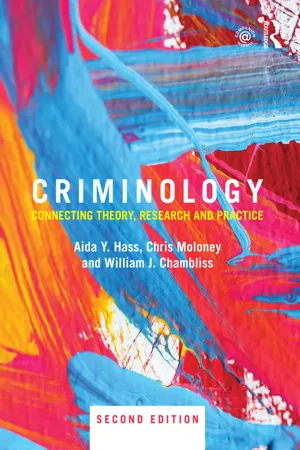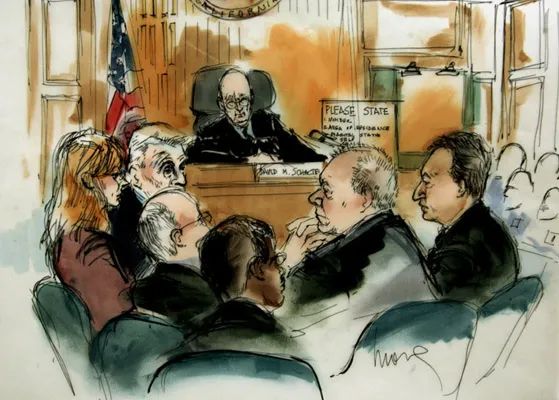
Criminology
Connecting Theory, Research and Practice
- 728 pages
- English
- ePUB (mobile friendly)
- Available on iOS & Android
Criminology
Connecting Theory, Research and Practice
About this book
Connections among theory, research, and practice are the heart and soul of criminology. This book offers a comprehensive and balanced introduction to criminology, demonstrating the value of understanding the relationships between criminological theory, research, and practice in the study of crime and criminal behavior. Utilising a range of case studies and thought-provoking features, it encourages students to think critically and provides a foundation for understanding criminology as a systematic, theoretically grounded science. It includes:
- A comprehensive overview of crime in American society, including the nature and meaning of crime and American criminal law as well as the scientific study of crime,
- A concise, straightforward, and practical approach to the study of the American criminal justice system and its various components, including individual chapters on police, courts, and corrections,
- An overview of criminological theory, including classical, biological, psychological and sociological approaches,
- A survey of typologies of criminological behavior including interpersonal violent crimes, property crime, public order crime, organized and white collar crime, state crime, environmental harm and cybercrime,
- Concluding thoughts exploring challenges facing criminal justice policy and the future of criminological theory.
This new edition has been thoroughly revised and updated and includes brand new chapters on corrections, courts, criminal law, law enforcement, and technology and cybercrime. It is packed with useful and instructive features such as themed boxed case studies in every chapter, critical thinking questions, lists of further reading, and links to e-resources. A companion website includes PowerPoint slides for lecturers, links to useful resources, and lists of further reading.
Frequently asked questions
- Essential is ideal for learners and professionals who enjoy exploring a wide range of subjects. Access the Essential Library with 800,000+ trusted titles and best-sellers across business, personal growth, and the humanities. Includes unlimited reading time and Standard Read Aloud voice.
- Complete: Perfect for advanced learners and researchers needing full, unrestricted access. Unlock 1.4M+ books across hundreds of subjects, including academic and specialized titles. The Complete Plan also includes advanced features like Premium Read Aloud and Research Assistant.
Please note we cannot support devices running on iOS 13 and Android 7 or earlier. Learn more about using the app.
Information
Part I
Crime, criminal law, and criminology
1
Crime, deviance, and criminology: a brief overview
- How do we define crime?
- The definition of crime from a “legalist perspective”
- The definition of crime from a “political perspective”
- The definition of crime from a “psychological perspective”
- The definition of crime from a “sociological perspective”
- What does deviance mean?
- What is criminology?
- What is criminal justice?
- The “popular image” of crime v. the reality of criminal behavior
- Criminology and theory
- Criminological research and public policy
- Criminology and the law
- The consensus view
- The conflict view
- A period of change in criminology and the criminal justice system: 1970s–1990s
- Summary
- Critical thinking questions
- e-Resources
- Notes
- How do we define crime?
- What is deviance?
- When is crime deviant, and deviant behavior criminal?
- What is criminology?
- Does the popular image of crime measure up to reality?
- How does criminology guide our study of crime?
- How does criminology influence social policy?
- How do criminology and criminal justice relate to one another?
political perspective
sociological perspective
psychological perspective
deviance
social norms
folkways
mores
taboos
laws
crime
criminology
criminologist
criminal justice
law enforcement agencies
courts
correctional system
criminal law
theory
consensus model
conflict model


How Do We Define Crime?

Table of contents
- Cover
- Title
- Copyright
- Dedication
- Brief contents
- Detailed contents
- List of images
- List of figures
- List of maps
- List of tables
- List of boxes
- About the authors
- Preface
- How to use this book
- PART I CRIME, CRIMINAL LAW, AND CRIMINOLOGY
- PART II THE CRIMINAL JUSTICE SYSTEM IN ACTION
- PART III AN OVERVIEW OF CRIMINOLOGICAL THEORY
- PART IV TYPOLOGIES OF CRIMINAL BEHAVIOR
- PART V A LOOK AHEAD
- Image acknowledgments
- Index